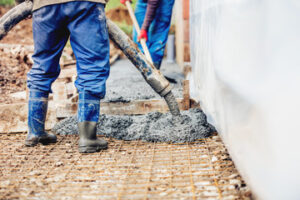Plumbing Express, Inc. solves urgent problems that can cause significant damage, like a burst pipe. Their work ensures that we have access to clean water and functioning waste systems, essential for maintaining good health.

They install and connect pipes, fixtures and appliances like sinks, toilets, showers and water heaters. They also inspect plumbing systems to ensure they are safe and adhere to building codes.
Plumbing emergencies can happen at any time and they often come at the most inconvenient times. They can include a burst pipe, clogged drain or even a water leak that is causing damage to your home. Knowing what to do in a plumbing emergency can help reduce damage, save money and keep your family safe.
Plumbers can provide a variety of emergency plumbing services. They may inspect your water piping and other parts of your home’s plumbing to identify potential problems, repair them or replace them as needed. They can also provide a variety of other services, such as drain cleaning, toilet repairs and installing fixtures.
If you are experiencing a plumbing emergency, it is important to call a plumber right away. Many plumbing companies offer 24/7 emergency services. This allows them to respond quickly to your needs, which can be especially helpful if the problem is a major one like a burst pipe or severe clog.
Before calling an emergency plumber, it is a good idea to turn off your main water source if possible. This will prevent any further water damage from occurring while you wait for a plumber to arrive. You should also try to reduce water use as much as possible and keep the area as dry as possible. If you have any shut off valves nearby, try to close them as well.
Plumbers should also be familiar with local plumbing codes and regulations in order to ensure their work meets industry standards. In addition, they should continually update their skills and learn new techniques to stay ahead of the competition. Many plumbers also choose to become master plumbers, which can open up a number of career options and opportunities for advancement. In addition, being self-employed can be a great option for plumbers who want to control their schedule and work life. However, it is important to note that this profession can be physically demanding and requires a lot of standing and bending over for long periods of time. This can lead to back and neck strain, as well as other injuries.
Residential Plumbing
Residential plumbing services encompass a wide range of tasks, from installing and connecting pipes to diagnosing and repairing faulty fixtures. In this role, plumbers often interpret blueprints and building codes to plan and execute new construction projects, as well as maintain existing systems. They may also use specialized tools to repair or remove blockages in drains, pipes, and water heaters. Additionally, they may recommend upgrades to improve a home’s energy efficiency and comfort.
Plumbers working in residential settings typically work directly with homeowners and tenants to resolve plumbing issues. This can involve interacting with customers to discuss service options, providing estimates, and answering questions. It’s important for residential plumbers to have excellent customer service skills, as they frequently work in tight spaces and interact with customers face-to-face.
Plumbing problems in homes can have a wide impact on residents’ safety and comfort. For example, clogged drains and sewer lines can lead to wastewater and sewage backups that put residents at risk for health concerns like mold growth and bacterial infections. In addition, running toilets and leaking faucets can create unpleasant odors and waste buildup. Therefore, it’s crucial for plumbers to have the right equipment and knowledge to diagnose and repair these issues quickly and effectively.
In the case of a pipe leak or water damage, residential plumbers often use visual aids like plumbing endoscopes and eco-friendly dyes to pinpoint the location of the problem and identify the appropriate repairs. This may include caulking, sealing, and gasket installation. Plumbers can also reroute, relocate, and replace pipes as needed.
Many residential plumbing services offer in-house financing options to help make the cost of necessary repairs more manageable for homeowners. This can be particularly helpful for those who are dealing with unexpected, costly plumbing problems. In addition, these financing programs can often be arranged more quickly than traditional loans and credit cards.
Whether you’re in need of routine maintenance or an emergency repair, it’s essential to choose the best plumber for the job. Look for a licensed plumber who offers a comprehensive suite of residential plumbing services, has experience working on your type of property, and provides clear and transparent pricing. It’s also a good idea to ask about any additional fees, like travel time or diagnostic charges, before hiring a plumber.
Commercial Plumbing
Commercial plumbing is used in a wide range of settings including restaurants, offices, schools, hotels and shopping centres. This type of plumbing is more complex than residential systems as it has to cater for a larger number of people at the same time. Commercial plumbers are skilled at repairing and maintaining large-scale water infrastructure. They also have a wider knowledge of regulations regarding the use of water in commercial spaces.
Commercial premises are usually higher up and have multiple floors, which means that they need a more complicated plumbing system to accommodate a greater number of occupants. This type of plumbing system may include more toilets, sinks and showers as well as specialised water heating appliances. In addition, many businesses have a high turnover of employees and customers, so it is important that their plumbing is in good working order to ensure that no one gets sick from contaminated water.
A clogged toilet or pipe is an inconvenience in any setting, but it can be a lot more problematic in a business where people are constantly using the same facilities. For example, if a shop or office has an issue with its plumbing, it could disrupt operations and lead to lost sales. Commercial plumbing services are able to respond quickly to these problems and provide effective solutions so that the business can continue operating smoothly.
The complexity of commercial plumbing also increases because these systems often have to operate at a higher capacity than residential ones. This can be due to the increased number of occupants or the fact that these spaces are used for more prolonged periods of time. For example, a shopping centre or office building may have hundreds of people coming in and out throughout the day, which means that the plumbing needs to be more resilient in order to cope with this demand.
This is why it’s so important to find a skilled and experienced commercial plumber who can understand these unique requirements and design, install and maintain plumbing systems that meet them. A reputable and reliable commercial plumber will be familiar with all of the relevant regulations, stay up to date with the latest technologies and tools in the industry, be able to complete projects on schedule and within budget, and have the resources to handle emergency jobs if needed.
Drain Cleaning
Drain cleaning is an important part of plumbing services, and plumbers are skilled in a variety of techniques for this service. They use specialized tools to remove blockages and clean the entire drainage system, including the sewer line. They can also inspect pipes for damage and recommend repairs. Regular drain cleaning helps homeowners avoid costly repairs and maintain a well-functioning plumbing system.
A clogged drain can be caused by a wide variety of items, from food scraps to hair and soap scum. Some clogs are simple and can be cleared with a plunger or drain snake. However, more complex clogs require professional help to ensure the pipe is fully cleaned and the problem doesn’t return. Professionals can also use video inspection equipment to identify the location of a clog and determine the best method for clearing it.
Plumbers can also install, repair, and replace plumbing fixtures, such as faucets, shower heads, toilets, water heaters, and more. They must follow blueprints and building codes when installing new pipes and fixtures, and they may need to collaborate with other professionals, such as architects or construction teams.
Plumbing systems in commercial and industrial buildings are often larger than those in residential homes, and they must be designed to accommodate a greater volume of water and waste. Larger systems also require more frequent maintenance and inspection to prevent problems such as leaks, clogs, and structural damage. Plumbers working in these environments often need to be knowledgeable about a wide range of building materials and design techniques to ensure the plumbing is up to code.
It’s important for people to understand the role that plumbers play in their daily lives. Not only do they provide essential services, but they can also help educate people on how to minimize the risk of plumbing emergencies by taking preventative measures. By following these tips, people can keep their home’s plumbing running smoothly and efficiently for years to come.
Blocked drains can produce methane gas, which is a major contributor to global warming. The gas is produced by the anaerobic decomposition of organic material in confined spaces. Regular drain cleaning reduces the buildup of methane and other harmful greenhouse gases, promoting a healthier environment.








